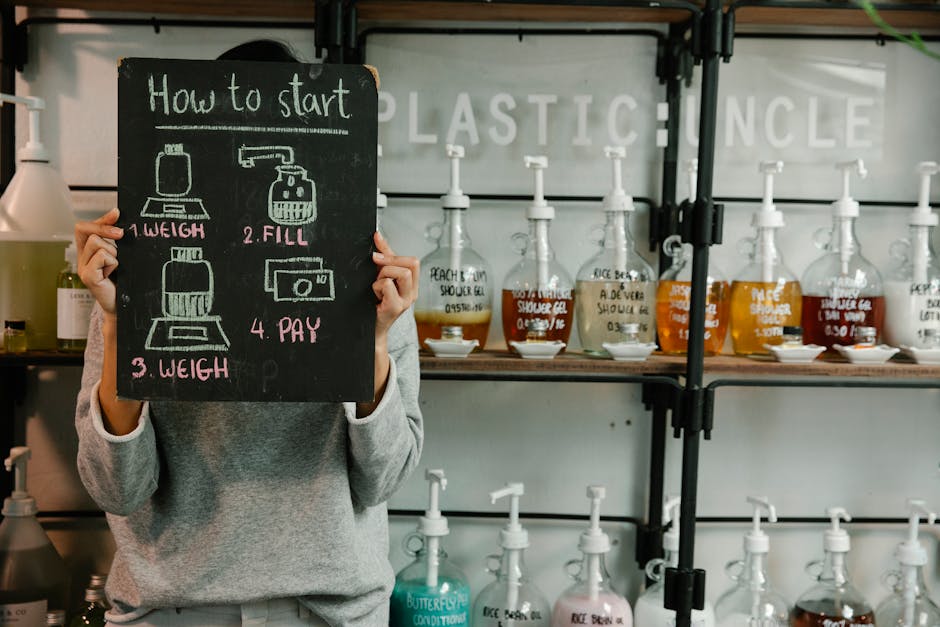Mastering the Art of Shopping for Eco-Friendly Brands
In today’s fast-paced world, consumers are becoming increasingly conscious of the impact their purchases have on the environment. The rise of eco-friendly brands is a testament to this growing awareness, as more and more people seek out products that are sustainable, ethical, and environmentally friendly. But with so many options available, how can you ensure that you are truly shopping for eco-friendly brands?
Join us on a journey to explore the intricacies of shopping for eco-friendly brands. From understanding the key criteria to look for when making a purchase to deciphering greenwashing tactics used by some companies, we will delve into the world of sustainable shopping and empower you to make informed choices. So, grab your reusable tote bag and let’s get started!
The Importance of Shopping for Eco-Friendly Brands

Before we dive into the specifics of shopping for eco-friendly brands, let’s take a moment to understand why it is so important to make sustainable choices. The fashion industry alone is responsible for 10% of global carbon emissions, making it one of the most polluting industries in the world. By choosing eco-friendly brands, you can help reduce your carbon footprint, support ethical practices, and contribute to a more sustainable future for our planet.
Understanding Eco-Friendly Certifications

One of the key ways to identify eco-friendly brands is to look for certifications that validate their sustainability claims. Organizations like the Global Organic Textile Standard (GOTS), Fair Trade Certified, and the Forest Stewardship Council (FSC) are just a few examples of certifications that indicate a brand’s commitment to environmental and social responsibility. By familiarizing yourself with these certifications, you can make more informed choices when shopping for eco-friendly products.
Decoding Greenwashing Tactics

Greenwashing is a deceptive marketing practice used by some companies to make their products appear more eco-friendly than they actually are. From vague claims like “all-natural” to misleading labels that suggest a product is sustainable when it is not, greenwashing can be tricky to spot. By learning how to identify greenwashing tactics, you can avoid falling prey to false eco-friendly claims and instead support brands that are genuinely committed to sustainability.
Researching Sustainable Materials

When shopping for eco-friendly brands, it is essential to pay attention to the materials used in the products you are considering. Sustainable materials like organic cotton, recycled polyester, and Tencel are not only better for the environment but also often higher quality and more durable than their conventional counterparts. By researching sustainable materials and their benefits, you can make more sustainable choices when adding to your wardrobe or home.
Supporting Ethical Supply Chains
In addition to considering the materials used in a product, it is also important to look at the brand’s supply chain and production practices. Supporting brands that prioritize fair labor practices, pay their workers a living wage, and have transparent supply chains is crucial for ensuring that your purchases are truly ethical and sustainable. By shopping from brands with ethical supply chains, you can feel confident that your purchase is making a positive impact on both people and the planet.
Calculating the True Cost of Fast Fashion
Fast fashion has become synonymous with cheap, disposable clothing that comes at a high cost to both the environment and the people involved in its production. By understanding the true cost of fast fashion from its impact on the environment to the exploitation of garment workers you can make more conscious choices when it comes to your wardrobe. Instead of supporting the fast fashion industry, opt for eco-friendly brands that prioritize sustainability and ethics.
Embracing a Minimalist Lifestyle
As you navigate the world of eco-friendly brands, consider embracing a minimalist lifestyle to further reduce your environmental impact. By focusing on quality over quantity, investing in timeless pieces, and decluttering your space, you can not only simplify your life but also contribute to a more sustainable future. Minimalism goes hand in hand with eco-friendly shopping, as it encourages thoughtful consumption and a deeper appreciation for the things we own.
Common Misconceptions about Eco-Friendly Brands
Despite the growing popularity of eco-friendly brands, there are still some common misconceptions that persist. From the belief that sustainable products are always more expensive to the assumption that eco-friendly brands compromise on style, it’s important to debunk these myths and showcase the diverse options available in the world of sustainable shopping. By addressing these misconceptions, we can encourage more people to make the switch to eco-friendly brands and embrace a more sustainable lifestyle.
Conclusion
To wrap things up, shopping for eco-friendly brands is not just a trend it’s a conscious choice that has the power to shape a more sustainable future for our planet. By understanding the key criteria for identifying eco-friendly brands, decoding greenwashing tactics, researching sustainable materials, and supporting ethical supply chains, you can make a positive impact with every purchase you make. So, next time you’re in need of a new wardrobe staple or home essential, remember to shop with sustainability in mind and support brands that are committed to making a difference.
Together, we can transform the way we shop and pave the way for a more eco-friendly future. Start small by making simple changes to your shopping habits, and watch as they ripple out to create a ripple effect of positive change. The power is in your hands choose eco-friendly brands, choose sustainability, and choose a better tomorrow for all.




